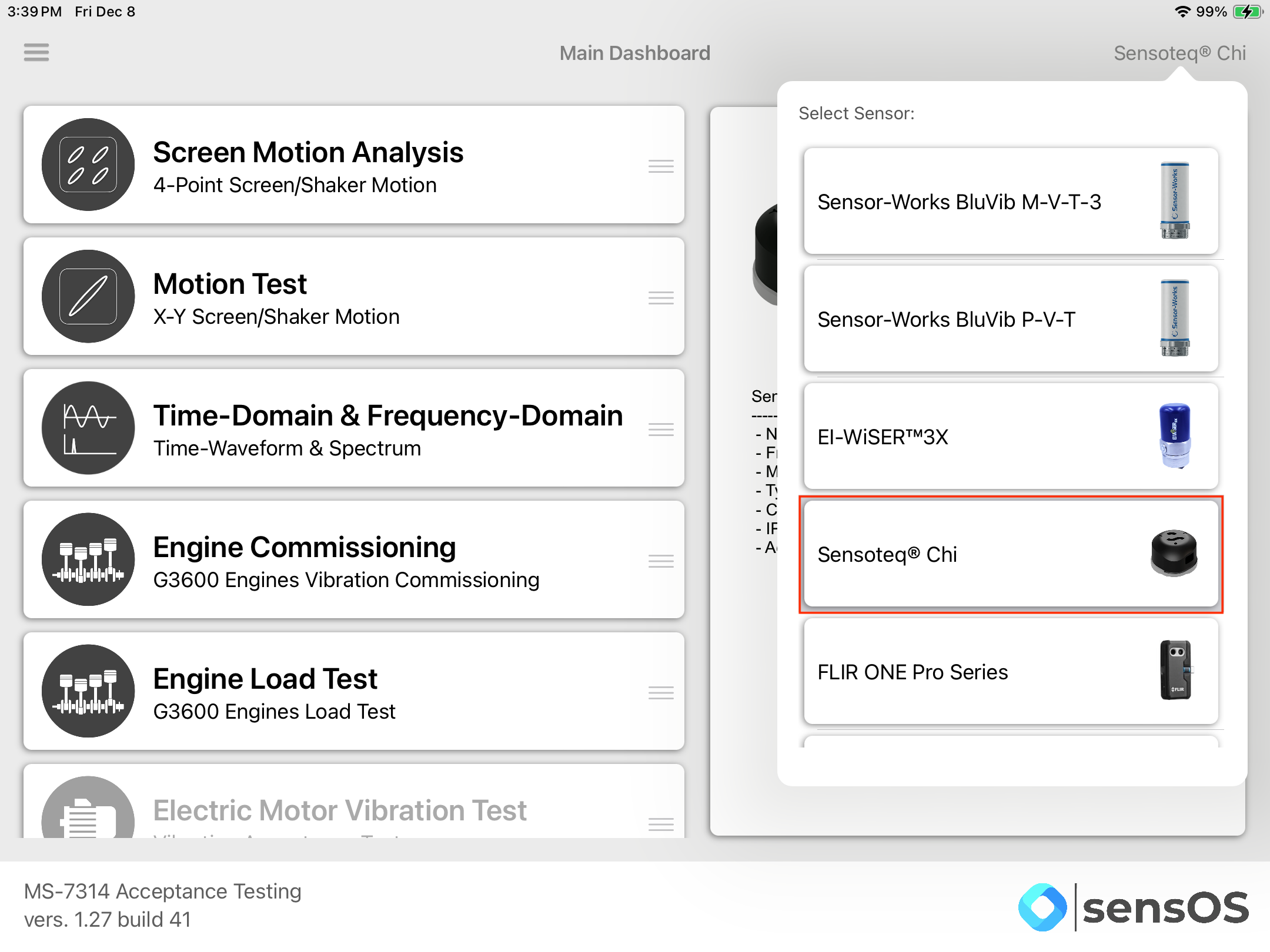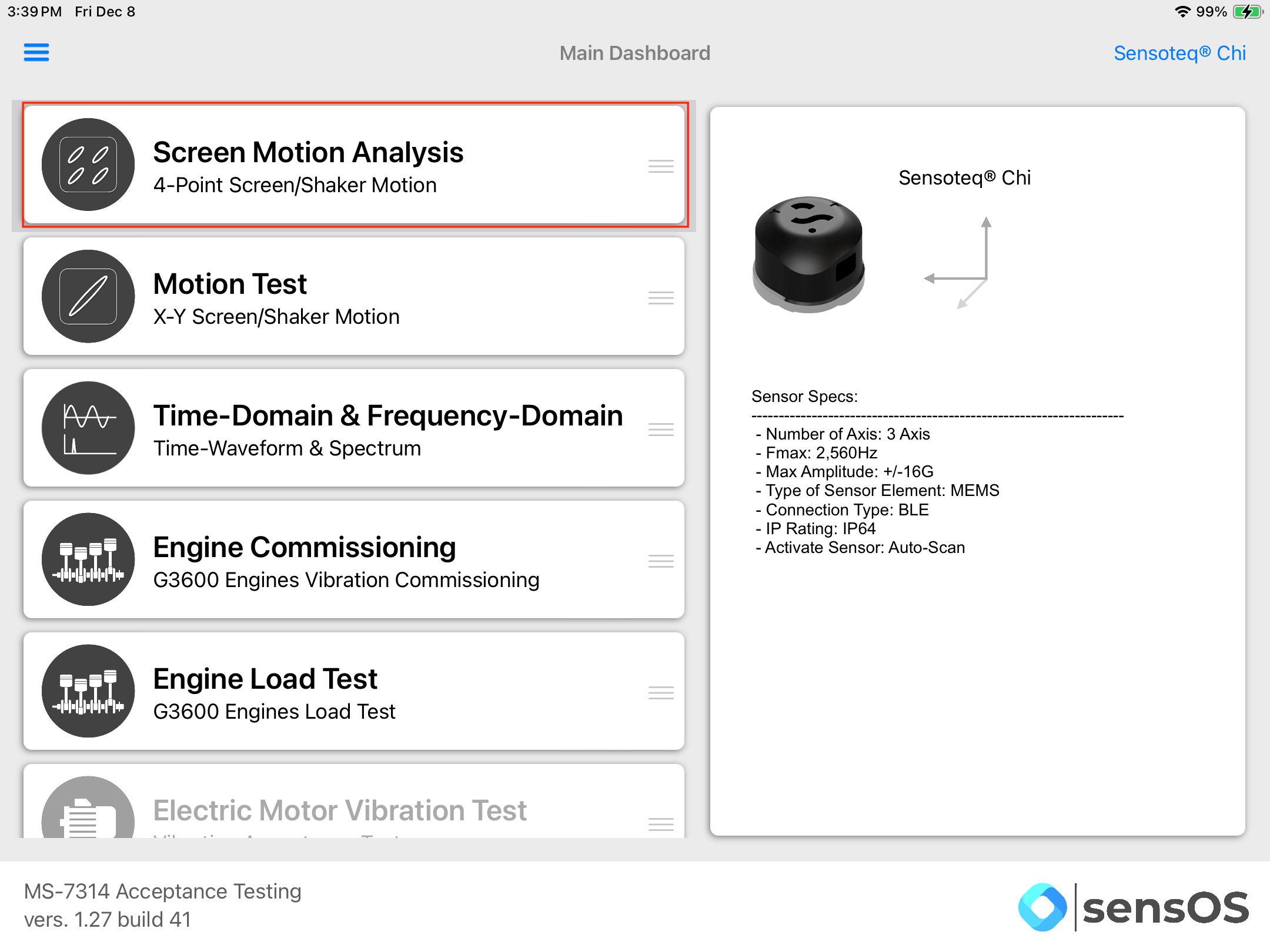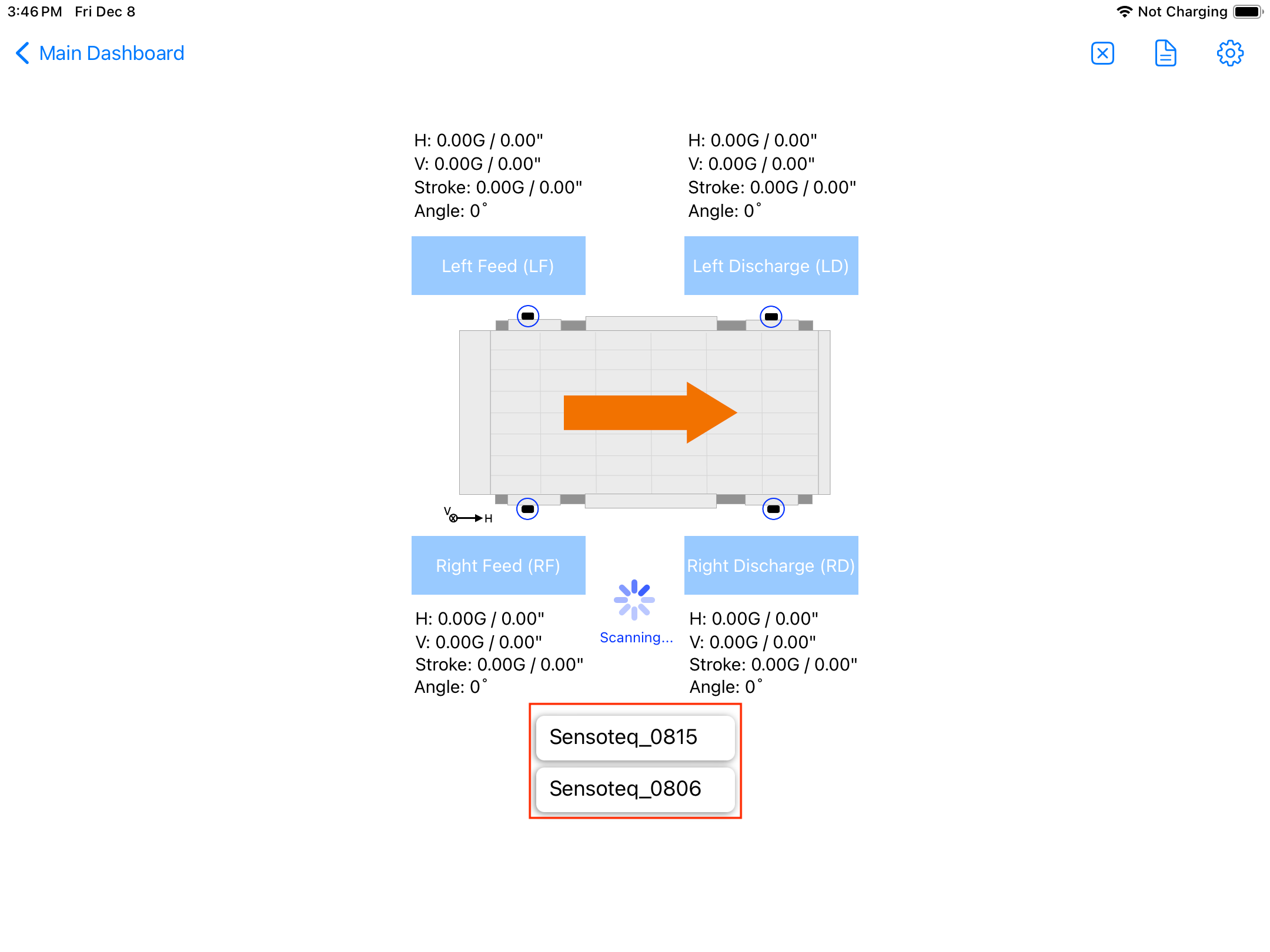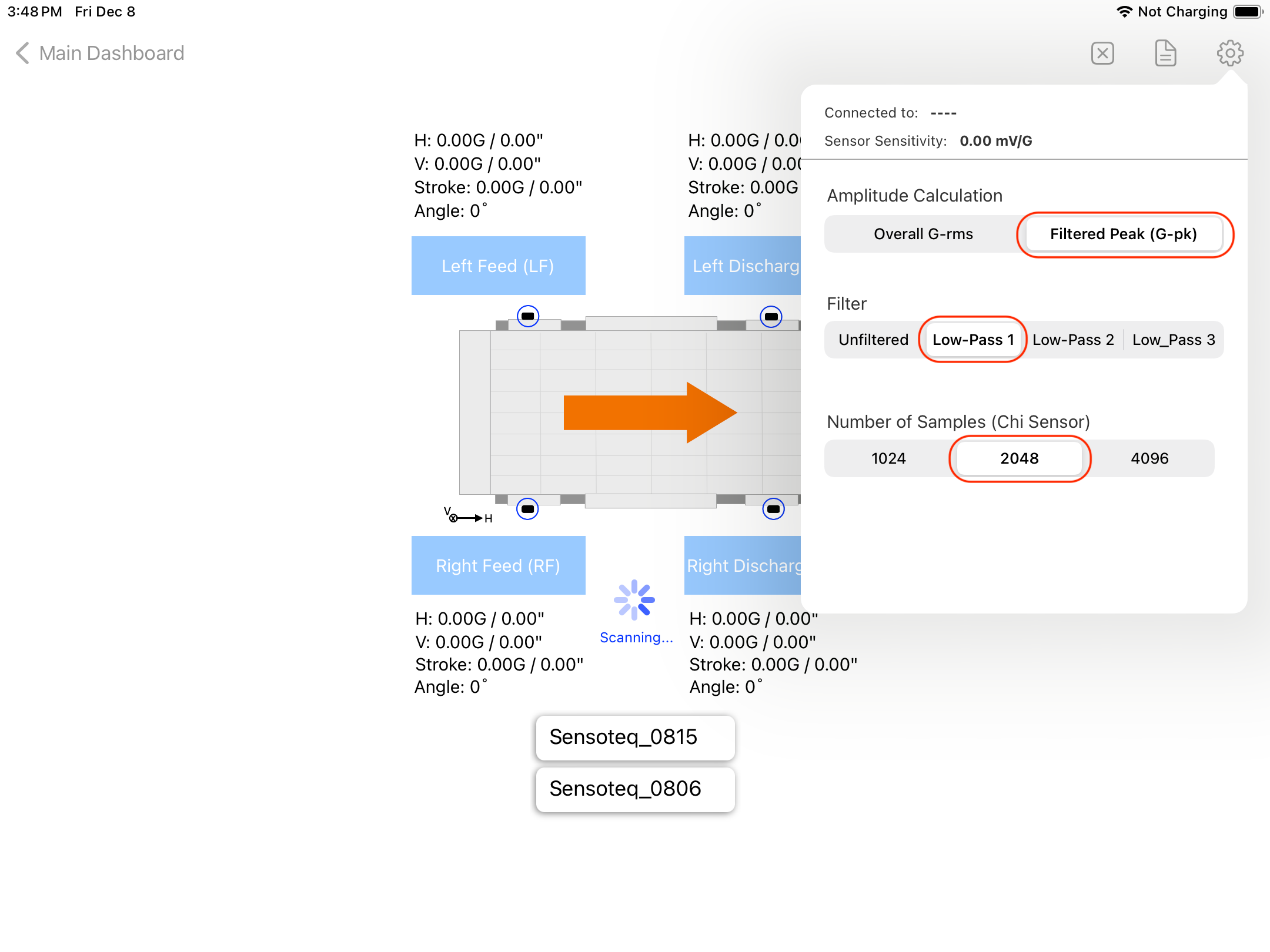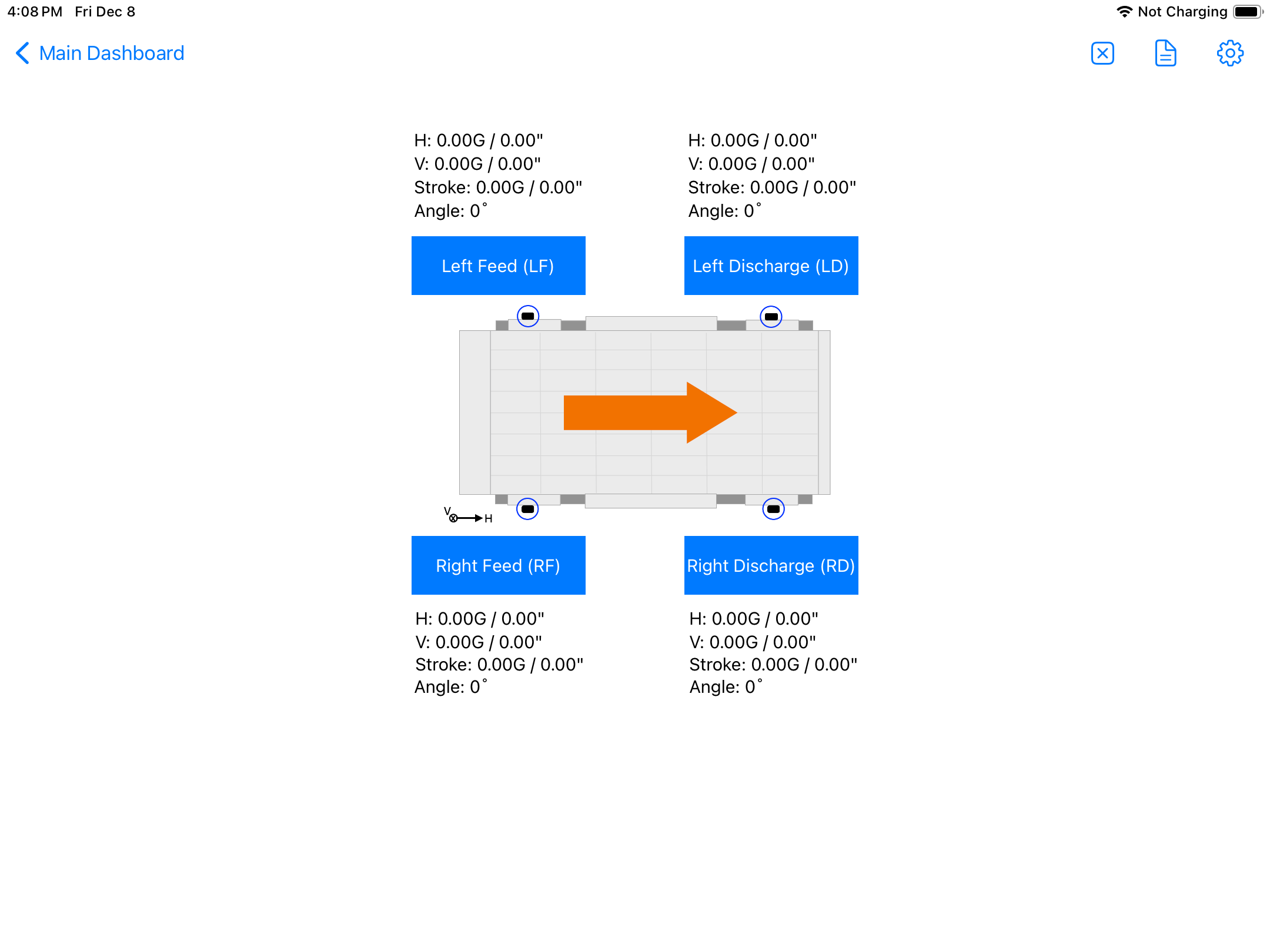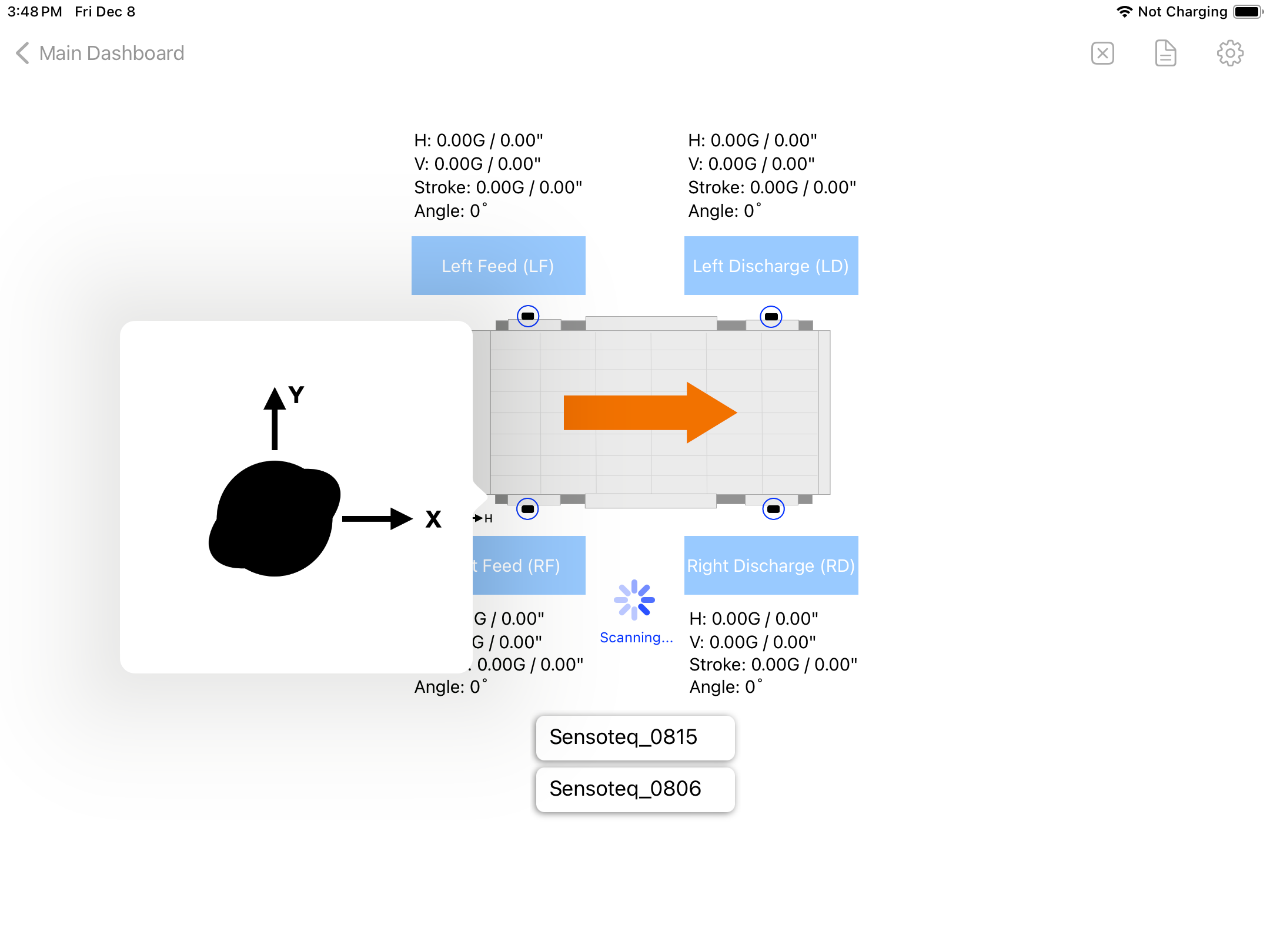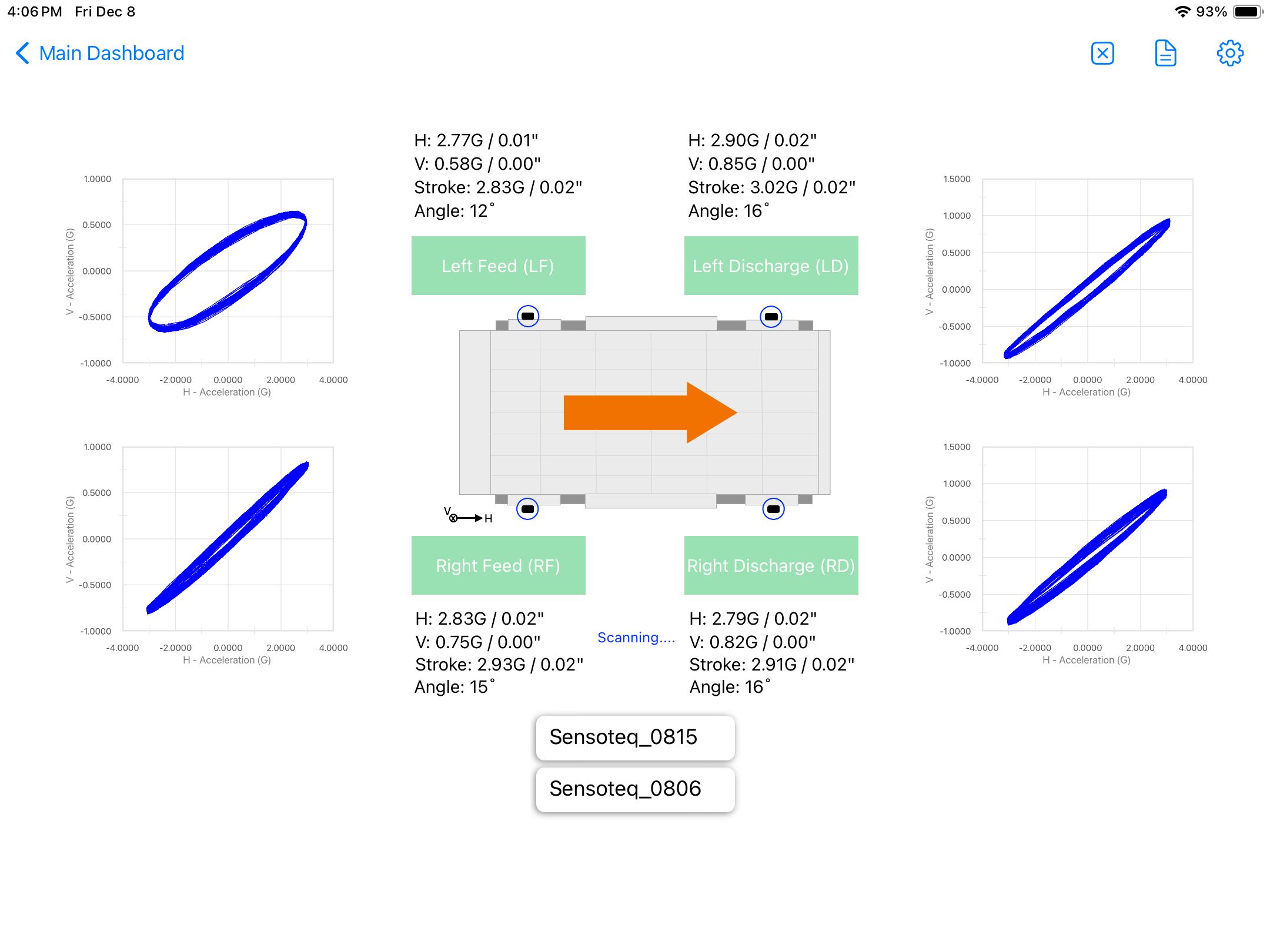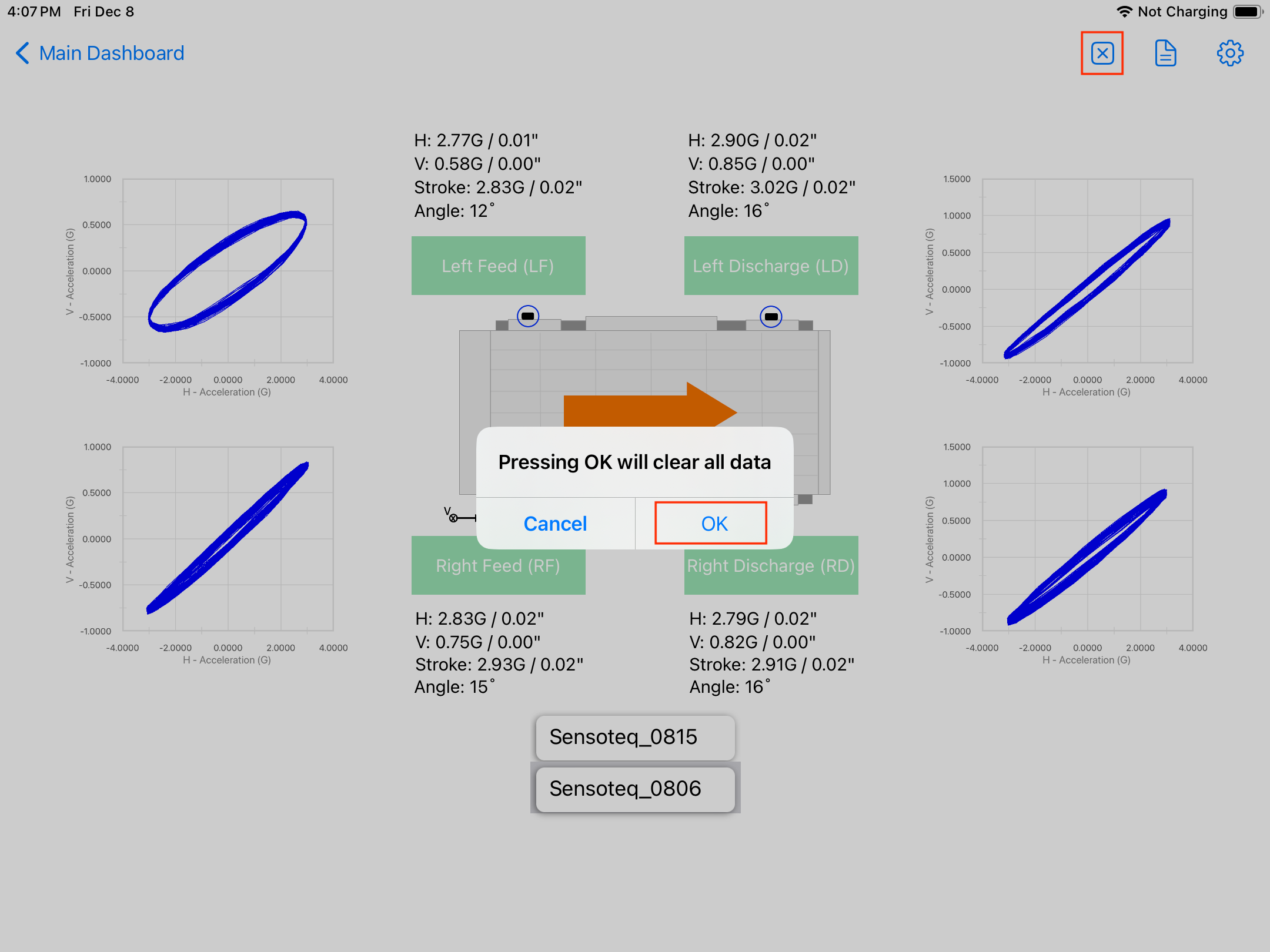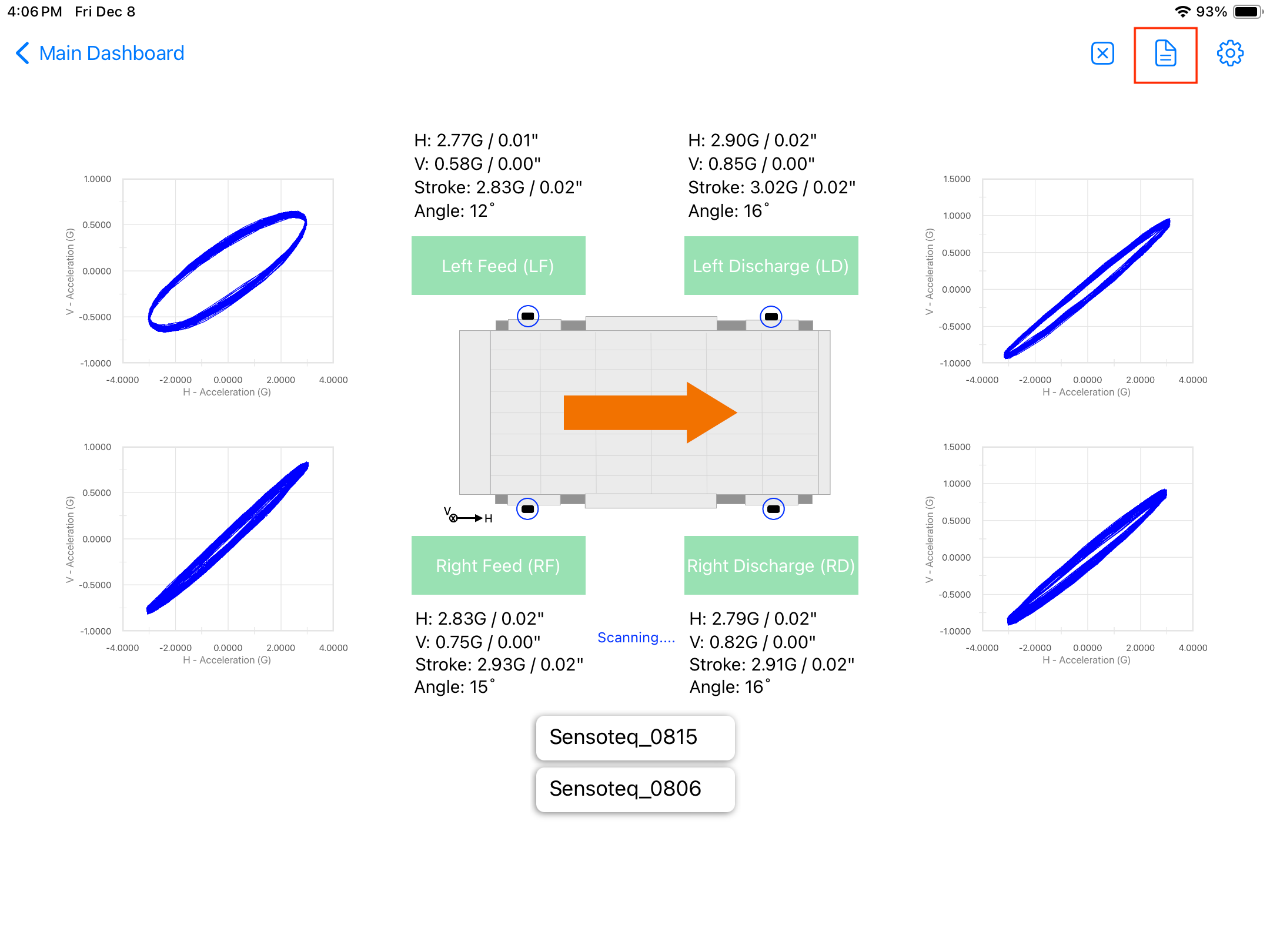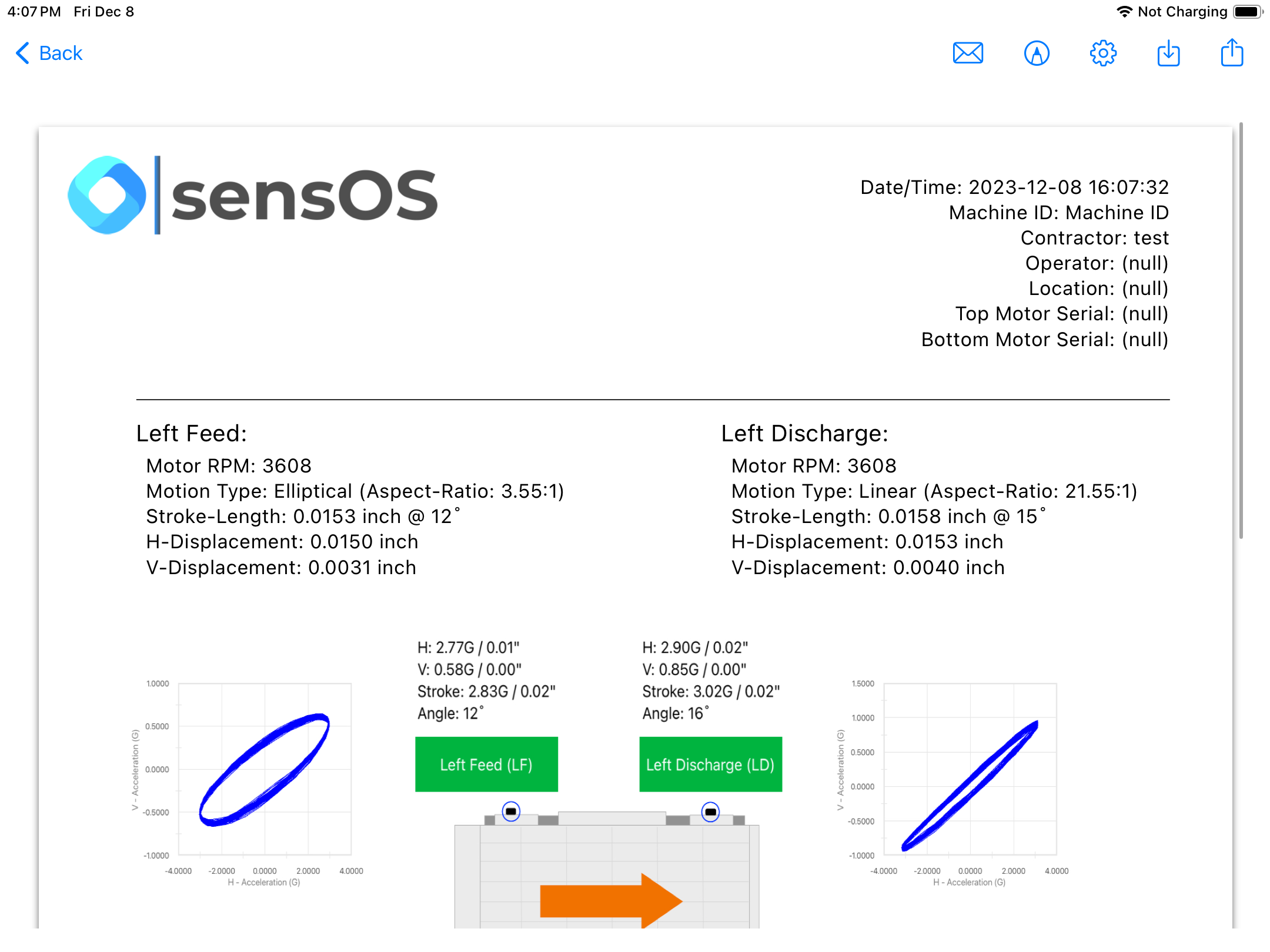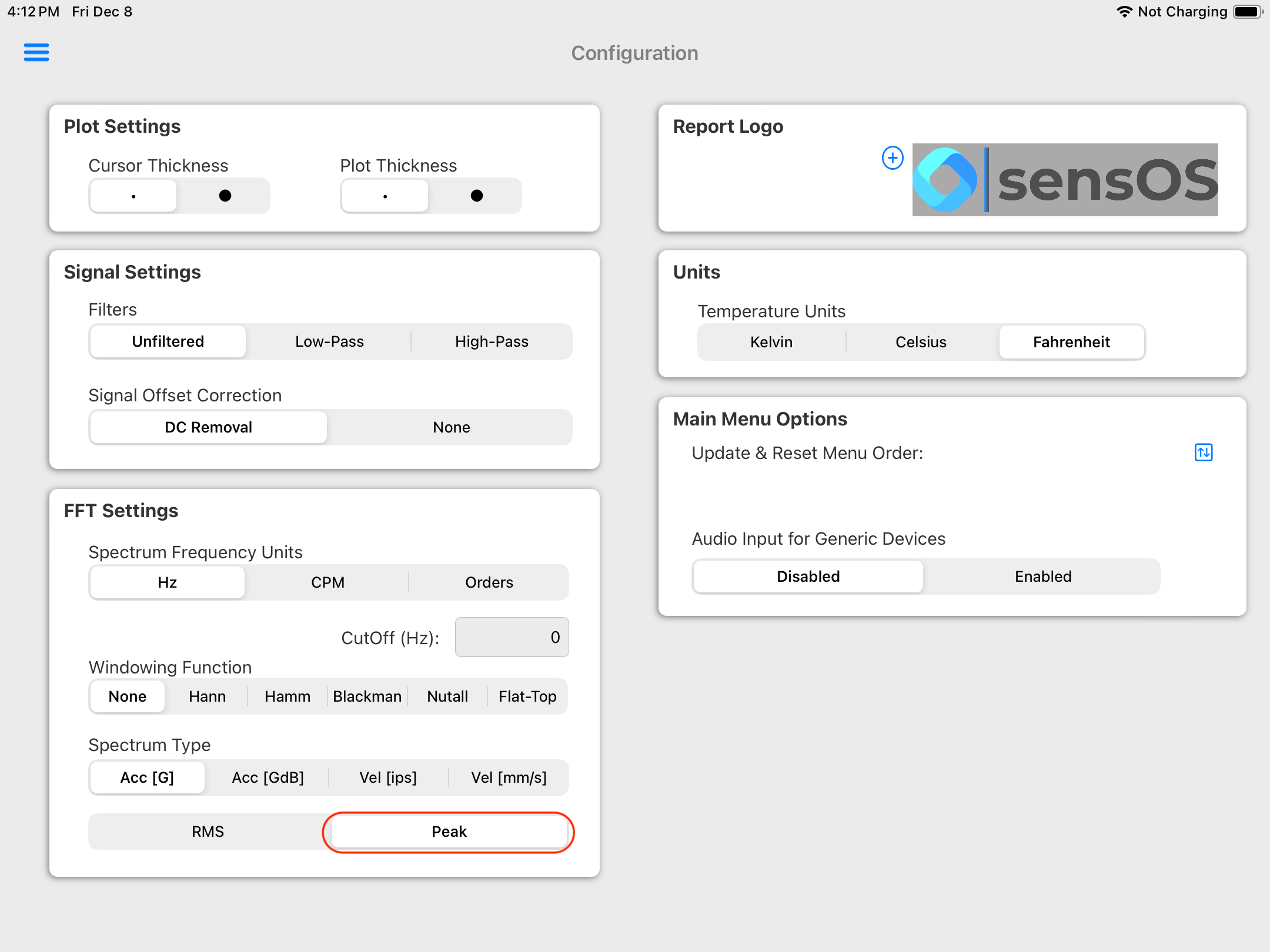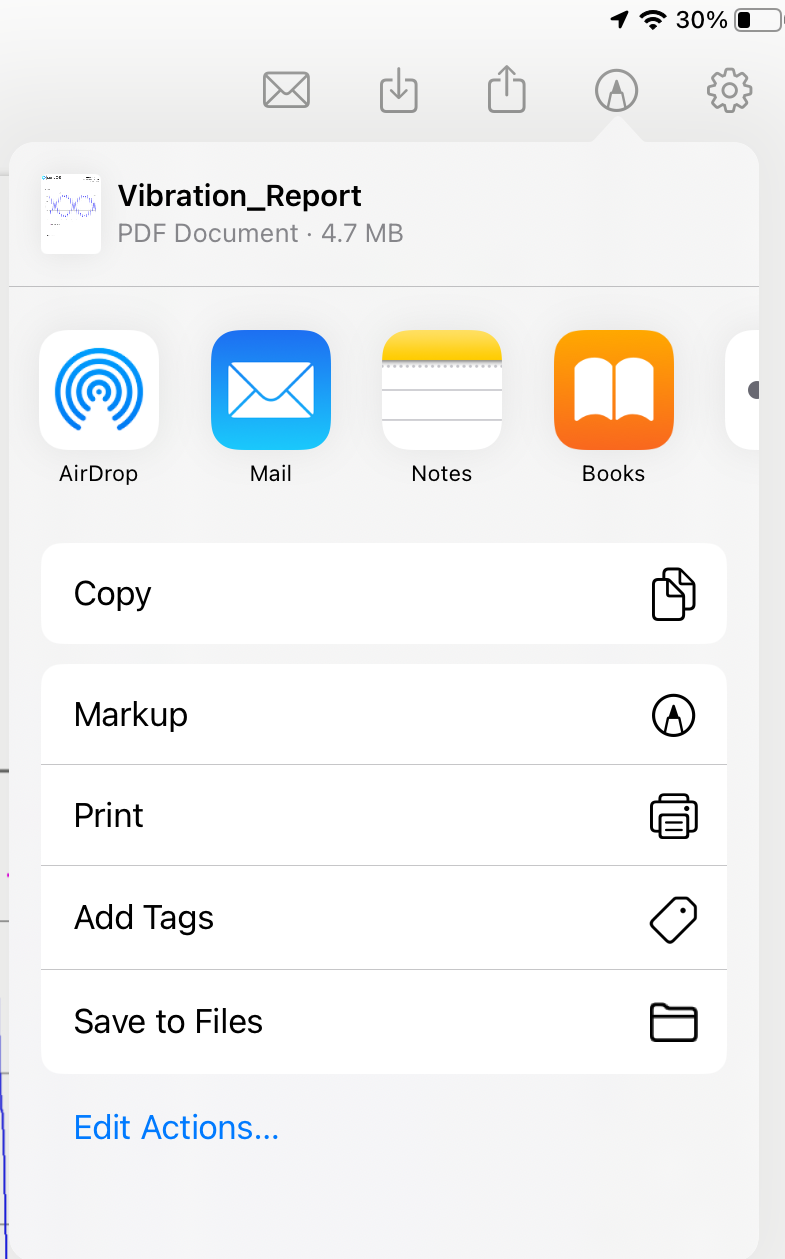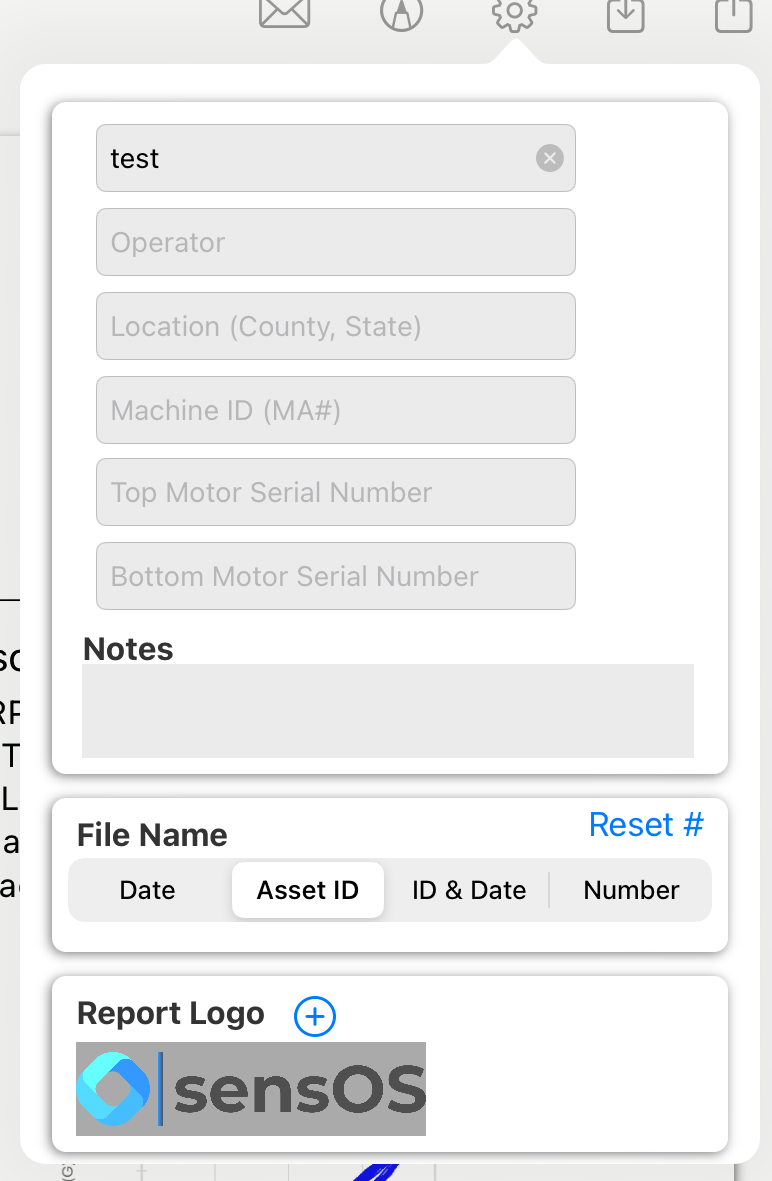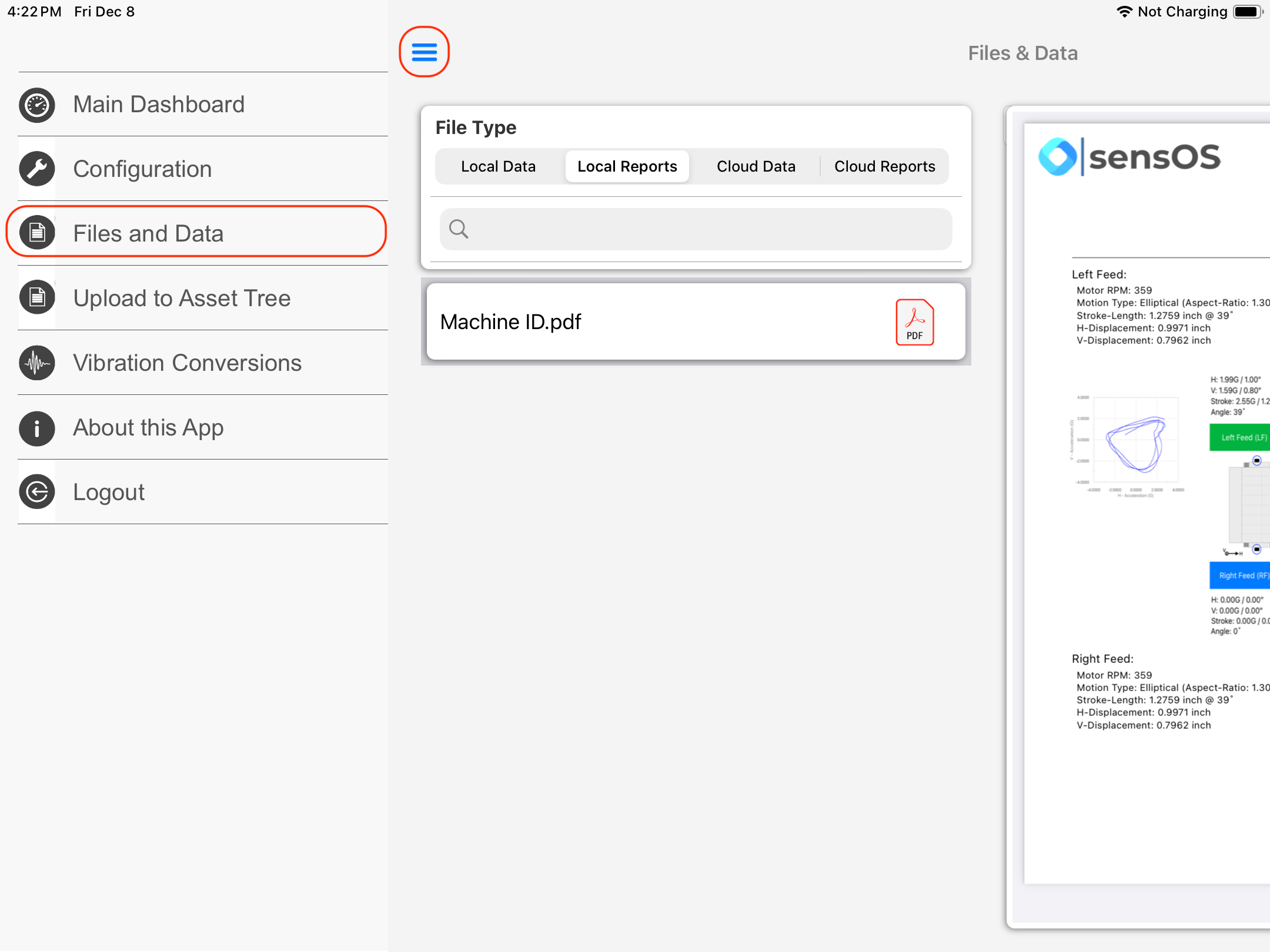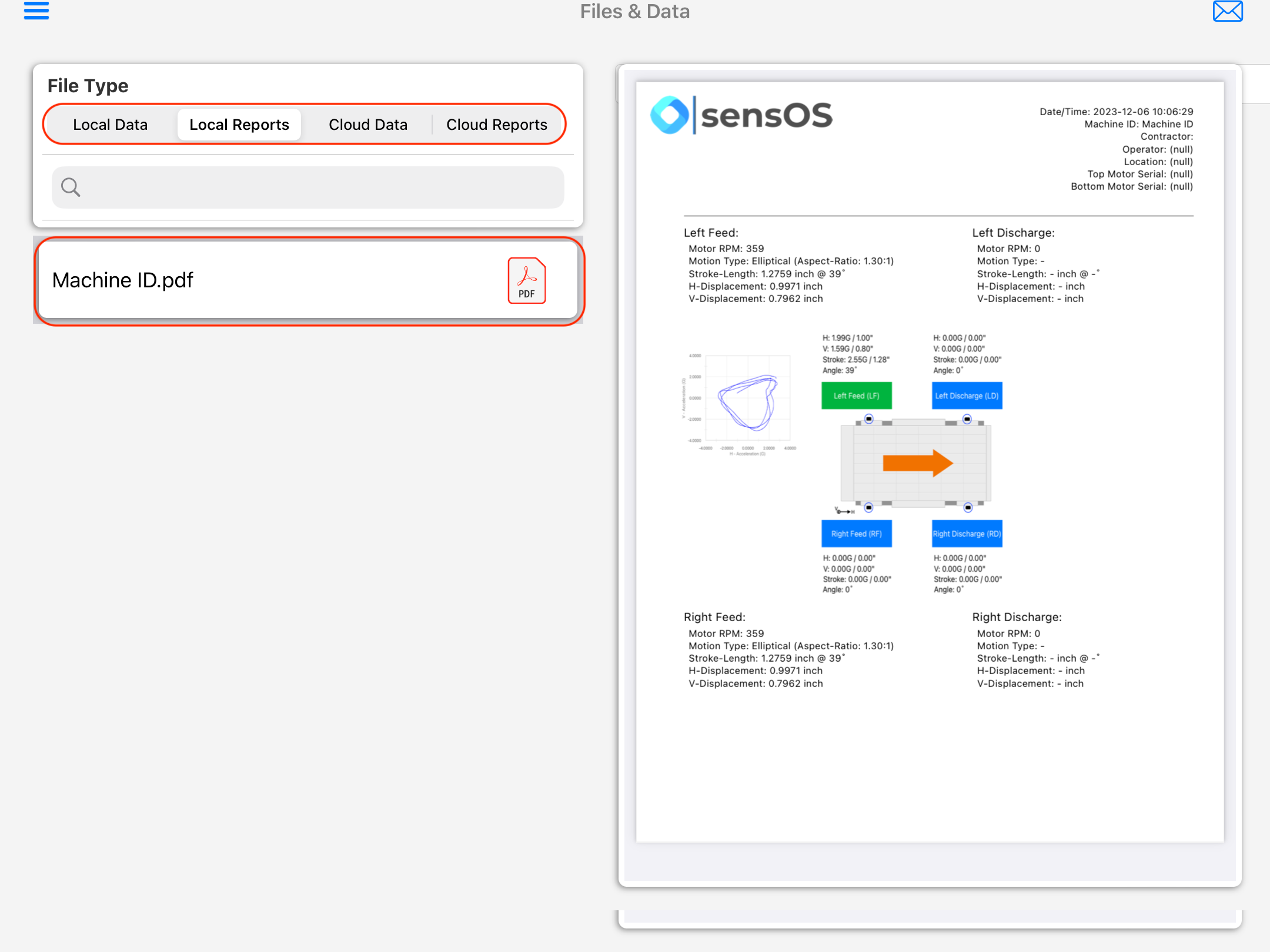Documentation
7314 Screen/Shaker 4-Point Motion Test
MS-7314: Vibration Acceptance Test iOS® version
- Version: 1.28 (b.42)
- Author: D. Bukowitz
- Created: 07 Sep, 2023
- Update: 07 Sep, 2023
If you have any questions that are beyond the scope of this document, Please feel free to email via info@sens-os.com
Description
The Motion test module requires an accelerometer signal from one of the supported Sensors to acquire the vibration from Shakers/Screens. The Motion Test provides a simple way for field technicians to completely characterize Shaker/Screen behavior including G force value, displacement, stroke length motion type and apect ratio. After test is complete users can create PDF reports which can be emailed or stored.
Compatibility
This module is compatible with the following sensors:
- Sensoteq® Chi
Main Menu
- Tap on the Sensor name button to open the list of available sensors, and select the sensor type from the list
- Select the Screen Motion Analysis option from the list.
Note: The user can change the order of the functionalities in the list by dragging it from the right button on each cell
4-Point Motion Test
- In the Motion Test screen the available sensor's Serial Number will appear in center of the screen (this number can be confirmed by looking at tha sensor's tag).
- The user can change the number of samples and switch between Overall and Filtered Peak by opening the settings pop-up. To remove high-frequency noise produced by other machine components, select the "Low-Pass" filter option. The recommended options for screen/shakers are "Filtered-Peak", "Low=Pass 1" and "2048" samples. Also is recommended to select the "Peak" amplitude option in the main App Configuration
- Once the user pressed on the sensor id, the buttons to collect data will be activated and ready to collect data.
- Press on each point of the screen/shaker in the view to see the correct sensor location diagram
- The user can now locate each sensor on the scren/shaker or use one sensor and move it around while collecting the data. Press the Blue Button for each position and wait for the plot and results.
- Repeat the process for each point/position
- To erase all data and start a new test, press the "X" icon in the top bar menu and then select "Ok" in the pop-up window.
- Once the test is complete the user can press on the report button which will show the screen/shaker Info (which can be defined in Gear Icon on Top) and Motion Type, Stroke Length and Horizontal-Vertical Displacement and Attack Angle.
- The PDF report can be shared, saved, sent by email, or modified. See more info in: Generating a pdf Report.
Configuration
- From the Main menu, click the top left menu button to open the left drawer with more options. Select 'Configuration' from the left menu
- Select the "Peak" Amplitude value to obtain the peak stroke of the motion.
Report
- The report view contains several options in the top bar menu: 1:Send by Email, 2:Markup Tool, 3:Report Configuration, 4:Save pdf locally, and 5:Upload Report to the Cloud bucket,
- The markup tool allows the user to copy the report to the clipboard, send it by Airdrop or any other messaging app, email it, print it or saved it to Files. The markup tool will open the standard tool to paint on the pdf report.
- The Report Configuration pop-up allows the user to enter the Report Title, Screen/Shaker ID and Notes to be added to the report. Here the user can also select the company's logo for the report. The report file name be default is the actual date and time, but the user can change it to the title name of the report or to both, the title name and date.
Files & Data
- By selecting the Files & Data button option in the main dashboard, the user can access the saved reports (local or cloud bucket) to be viewed or sent by email.
- Select "Local Reports" to view a list od the reports saved in the iPad or select "Cloud Reports" to view the list of reports in the cloud bucket (internet access needed for this option).
Changelog
See what's new added, changed, fixed, improved or updated in the latest versions.
Version 1.28 b.42 (07 Sep, 2023)
- Fixed 4-Point Screen/Shaker functionality
Version 1.18 b.35 (01 Apr, 2023)
- Fixed Motion Plot Noise Reduction
Version 1.17 b.34 (28 Feb, 2023)
- Optimized Optimized for iPadOS 16
Version 1.02 b.7 (30 Mar, 2021)
Initial Release
